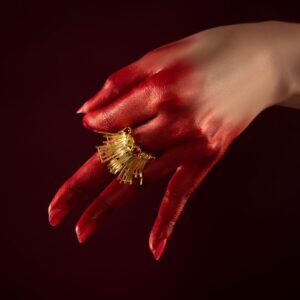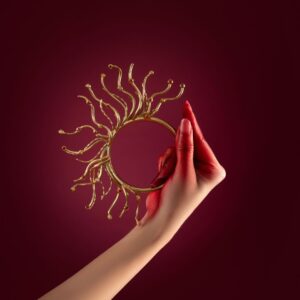She has showcased her creations in numerous exhibitions in London, underscoring her commitment to excellence in her craft. Recently, she has achieved a significant milestone in her professional journey where she has been recognized as one of the honorees for the 'One For The Future' award by NYC Jewelry Week. This annual accolade celebrates emerging talent in the jewellery industry and the selection is based on demonstrated dedication to the craft and a commitment to career growth.

Sugandh Makwana’s design practice is guided by an underlying intention to modernise the Indian jewellery through innovation in form. She looks through the lens of the unconscious biases one gets through their culture they grow up in but never realise about. She does that in her project 'Euphonious Seasonality' through the language that we all speak regardless of what culture, class or religion that we belong to – that is the language of food.
She experiments with the various forms of Rice, a food staple all across Asia and brings in the delicacy of rice and blends it with the harmony and fluidity of the hand mudras (meaning the various hand gestures) in an Indian classical dance – Kathak, that she learned as a young girl. Both the dance and food that influenced her life in more ways that she could imagine in, led her to take cues from the boldness of dance & introduce the grains of rice and reinterpret the regular irregularities in all creations. This unforeseen narration serves as reminders of her home country, India, through the hand-crafted made in recycled sterling silver; gold-plated creations that entail carved warm-toned precious gemstones, which metaphorically signify the warmth dance holds in her life.
Each creation brought to life reinterprets the delicacy and expresses it through bold designs, prompting the wearer to embrace their individuality and use it as a superpower. Sugandh’s work is a tender reminder to appreciate the highs & lows of the journey of life. The centre of the practice is cultural sensitivity and awareness.









2.5